Many people grow peppers, whether sweet or hot, but out of all the garden vegetables that we preserve, peppers are often overlooked.
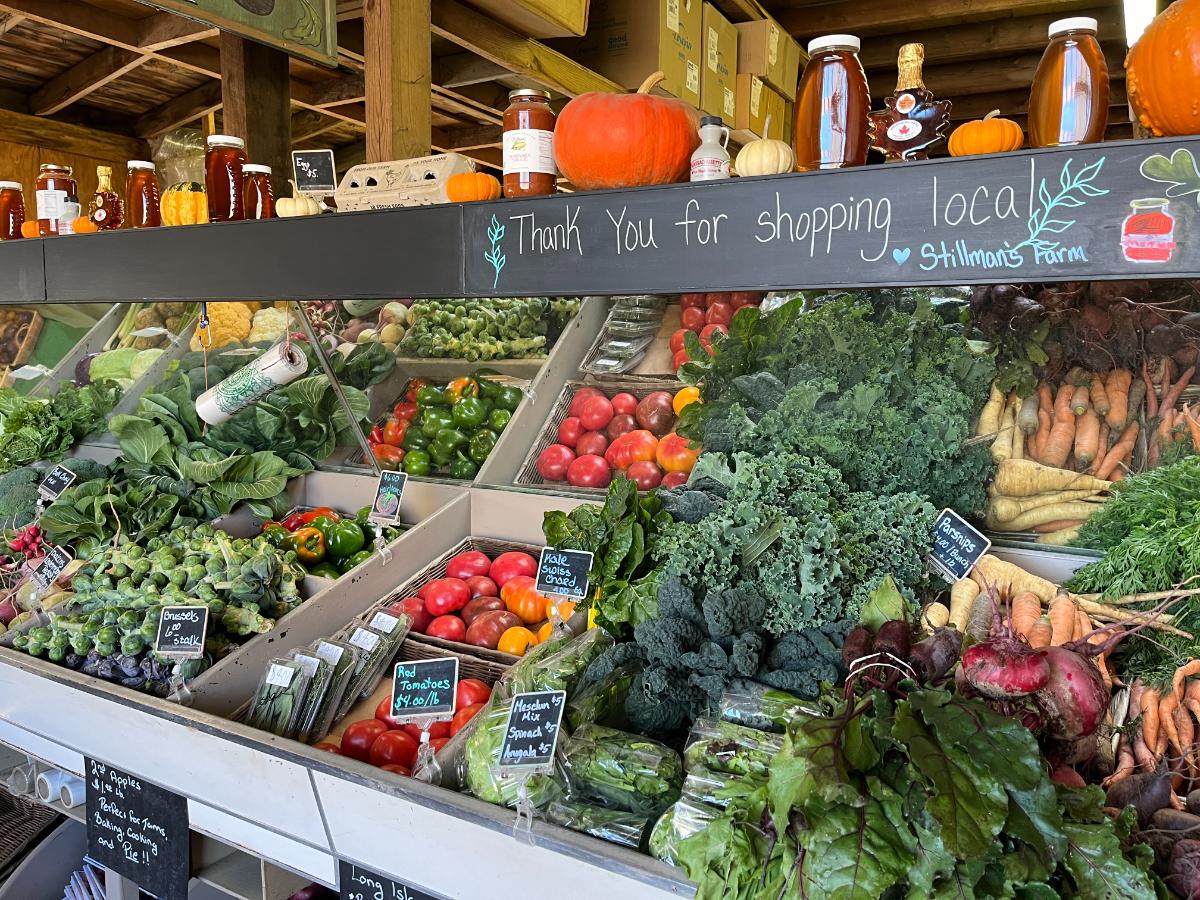
Most likely the reason this is true is that we often think of peppers, especially sweet pepper varieties, as something to be eaten fresh. Yes, we cook with them, but we don’t think of them as something to preserve.
In reality, peppers are easy to preserve and for cooking, they work just as well from a preserved state as they do from fresh.
What are the best ways to preserve peppers for cooking in the off-season? Here are the two tops.
Jump to:
Two Best Ways to Preserve Extra Peppers
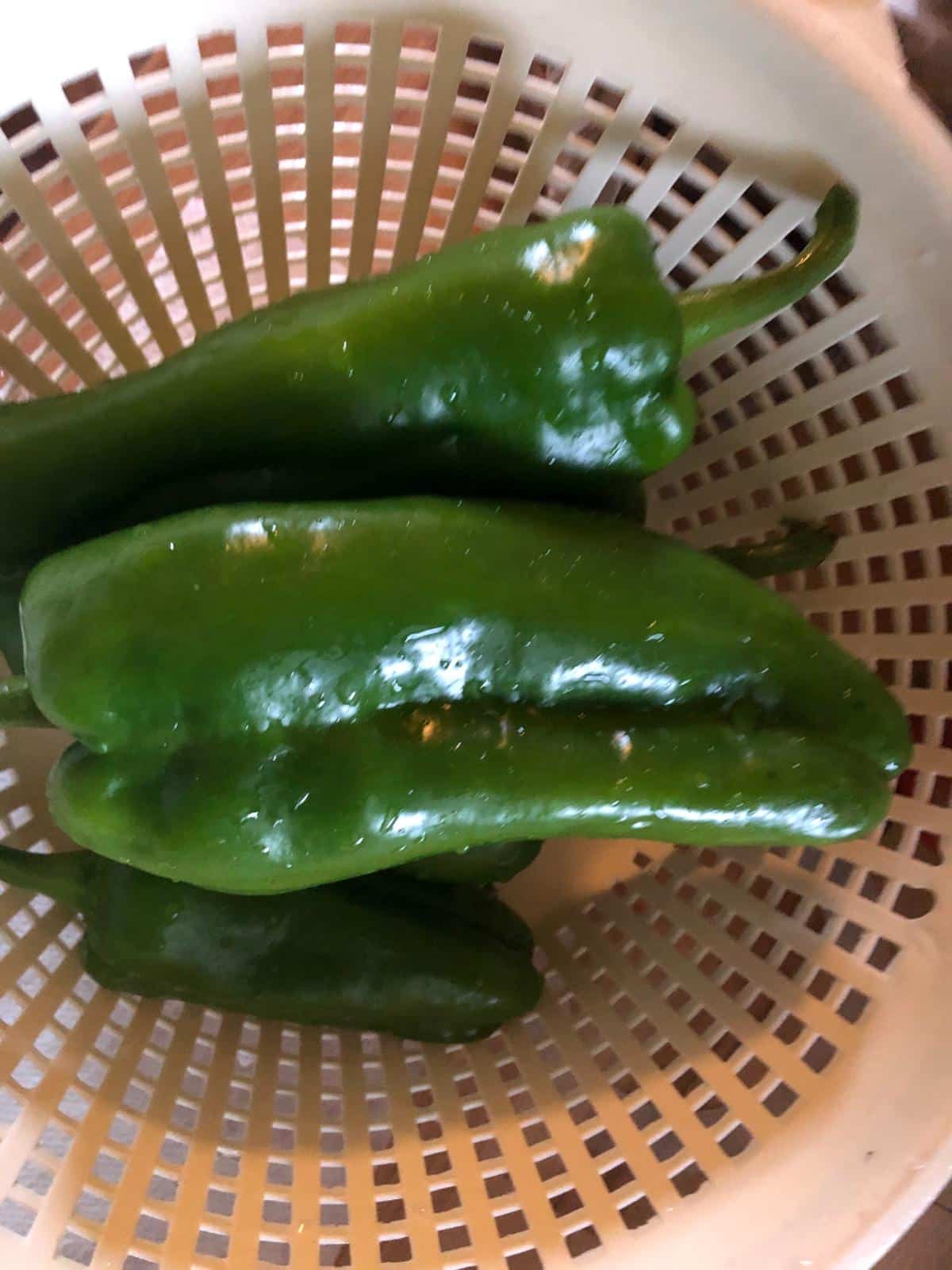
Whether you grow your own peppers and end up with more than you could ever use fresh (not an uncommon occurrence for pepper growers!), or whether you bought some at the farmers’ market that didn’t get used, these ways to save your peppers will put them to good use. Maybe not now, but certainly in the not too distant future.
Incidentally, even if you just have an extra pepper or two from your weekly grocery shopping, these ways to preserve peppers work just as well for extra peppers and leftover pieces.
Dehydrating to Preserve Peppers
Drying or dehydrating is an excellent option for preserving peppers. Of the two mentioned here, this one takes a little more time, but most of the time is spent in the dehydrator, so there’s not much more of a time commitment for you.
Why dehydrate your peppers
Dried peppers have a few advantages over frozen peppers:
- They are firmer after rehydrating and don’t get limp or juicy the way frozen, thawed peppers do
- They require no refrigeration (freezing) and are shelf-stable
- No freezer burn
- If your freezer fails or the power goes out, you won’t lose your peppers
- It’s easy to pull down your jar of dehydrated peppers, pour out what you need, and cap the jar for another day
- Store just as long or longer than frozen peppers
- Good option if freezer space is limited (isn't it always limited?)
- Dried peppers (hot or sweet) can be ground into chili or pepper powder and added as a seasoning to many dishes (make your own homemade ground red pepper!)
- Use as much or as little as you need!
How to dehydrate peppers
A dehydrator is best for drying peppers, but if you don’t have one, you can also dry your peppers in your oven.
In a dehydrator:
- Prepare your peppers. Wash the peppers, then cut out the stem.
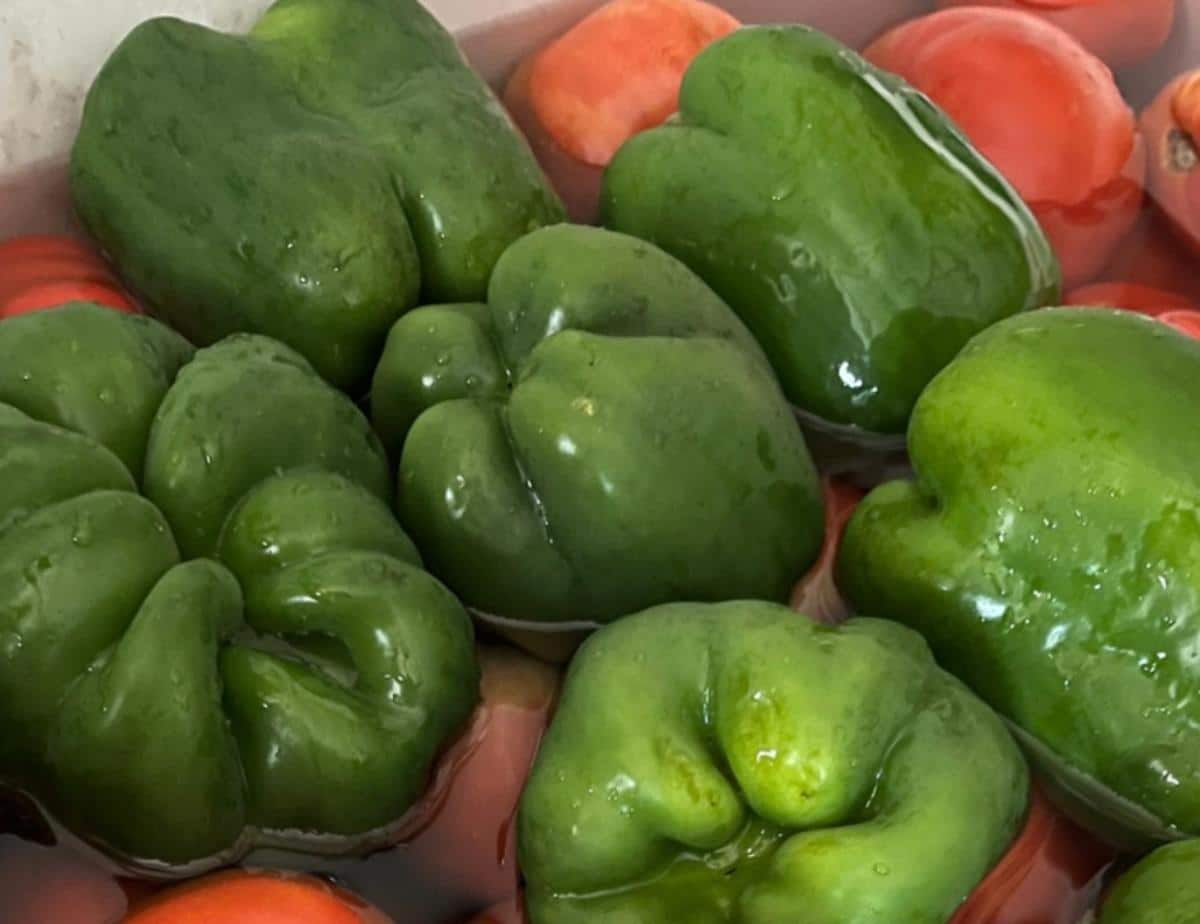
- Remove the seeds and core. (*Thin-walled hot peppers can be cut in half or pricked with a needle and then dried; thicker-walled peppers like jalapenos can be cut into rings.)
- Cut the peppers to your desired size. Diced is best and is usually the most useful after the peppers are dried (it will not be easy to cut peppers after they are dried -- they should be in cooking size before they’re dried).
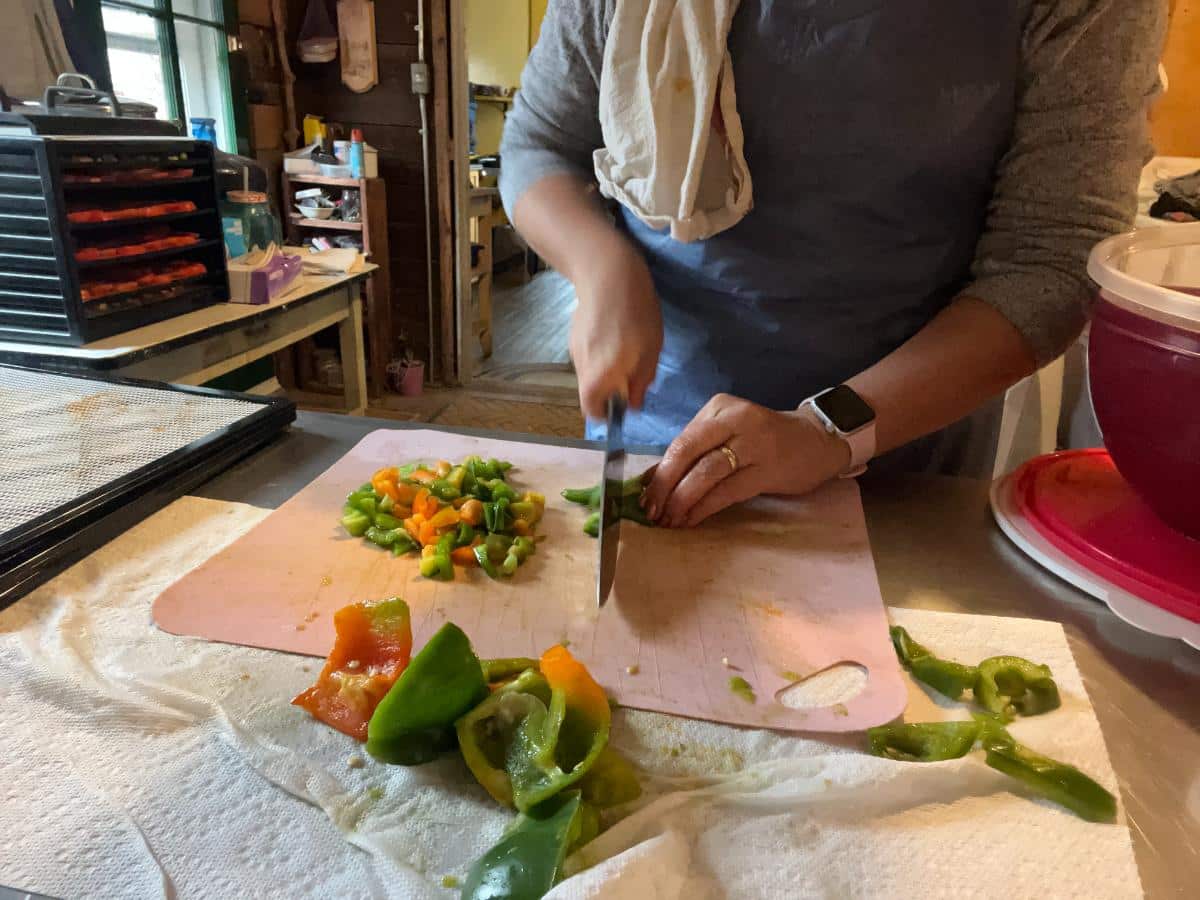
- If your dehydrator has wide tray openings, line it with a fine mesh screen.
- Spread the peppers in a single layer over the tray.
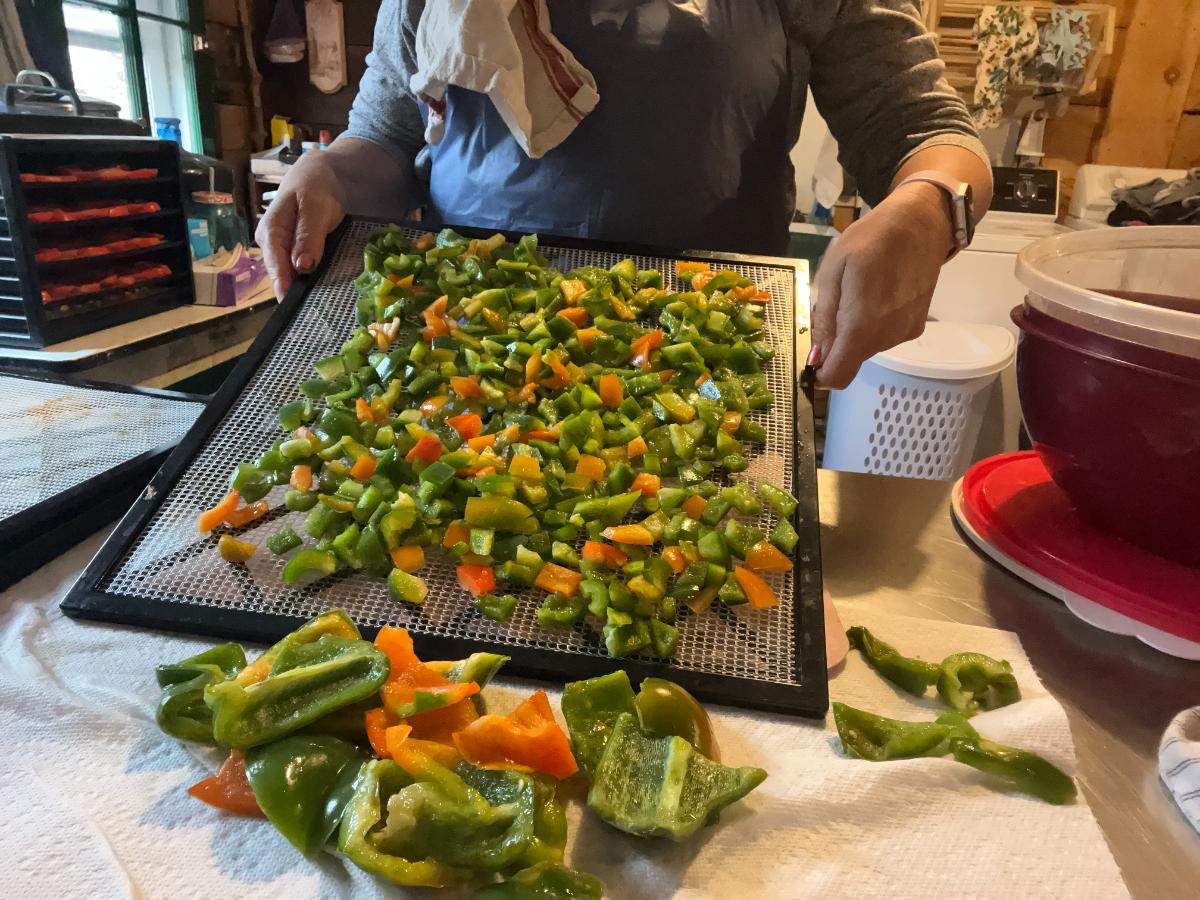
- Fill as many trays as you have peppers.
- Turn and rotate the trays after two hours to promote even drying.
- If you only have a tray or two of peppers, but you have something else to dehydrate that uses about the same temperature range, it is okay to put them both in the dehydrator at the same time -- more efficient, and saves money on electricity!
- Dehydrate your peppers at 140℉ (60℃) for four to six hours or until completely dried. You can dehydrate peppers as low as 125, which will help them keep better color, but it will take longer, from six to ten hours.
- Peppers are done when they are leathery, dry, and shriveled. They may be a little pliable, but they should not be sticky and they should not have any wet spots.
- Let cool completely before packaging. A good way to store dried peppers is in a glass canning or mason jar with an airtight lid.
In an oven:
- Prepare your peppers as above. Diced is recommended.
- Spread the peppers in a single layer over an oven-safe screen if you have one or on parchment paper.
- Dry on your lowest oven setting. Try to get the temperature down to 140℉ (60℃) or lower (many home ovens will not go that low).
- Dry for four to six hours or until done.
- Stir and check the peppers every hour.
- Another option is to heat your oven to its lowest temperature (for example, 150 or 175℉ -- 65.5 to 79.4℃). Then, shut the oven off and leave the light on with the door closed. Check after several hours and turn the oven on just to heat, then off again for more drying.
- Cool completely before packaging to store (see above).
How to use dried peppers
If your peppers are going into a soup, stew, sauce, or other dish with plenty of liquid, there is no need to rehydrate them before using. Simply add them to the dish when you start cooking. This works for dishes that cook for at least 30 to 45 minutes or longer.
You can also rehydrate your peppers if you want to use them for something like meatloaf, meatballs, or in a dish with lower liquid.
To rehydrate dried peppers, there are two options:
- Soak the peppers in hot water for 30 to 60 minutes, then use
- Soak overnight in cold water in the refrigerator
- When rehydrating, use twice as much water as peppers. You can pour off any excess liquid (or use it for more flavor in whatever you’re cooking).
When cooked or rehydrated, the consistency will be like cooked or sauteed peppers, not like freshly chopped.
Use about one-half the amount of dried peppers as you would fresh peppers (more or less to taste). They don’t rehydrate to exactly a one-half ratio, but the flavor is often more concentrated, so a measure of half or even less is often enough.
Here are some dishes where you might like using dried peppers:
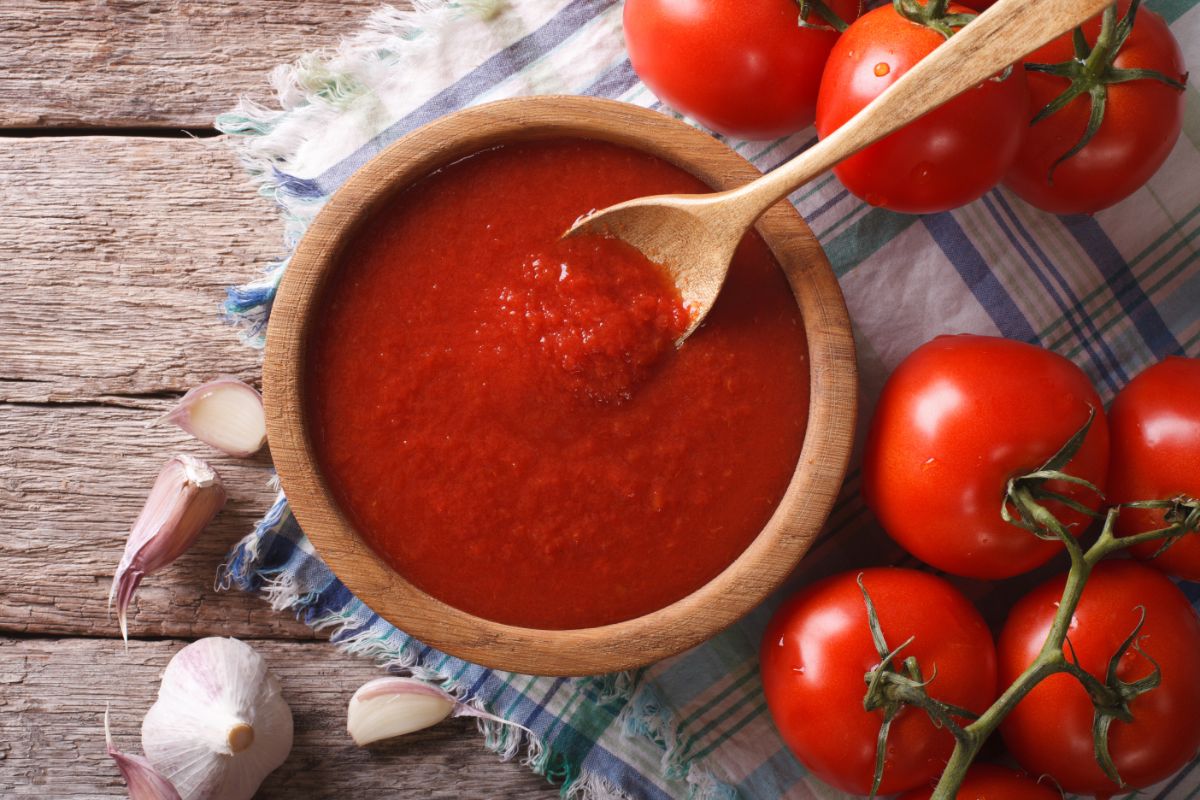
- Meatballs
- Meatloaf
- Reydhrated for eggs or scrambles
- Quiche
- In chili
- Soups
- Stews
- Tomato sauce
- …anywhere you would usually have cooked, diced peppers!
To make pepper powder or chili powder:
Grind the dried peppers, after cooling completely, in a coffee grinder or herb grinder. Grind until the desired consistency is reached.
Be careful not to inhale the powder of hot peppers when you're grinding!
Freezing Peppers to Preserve Them
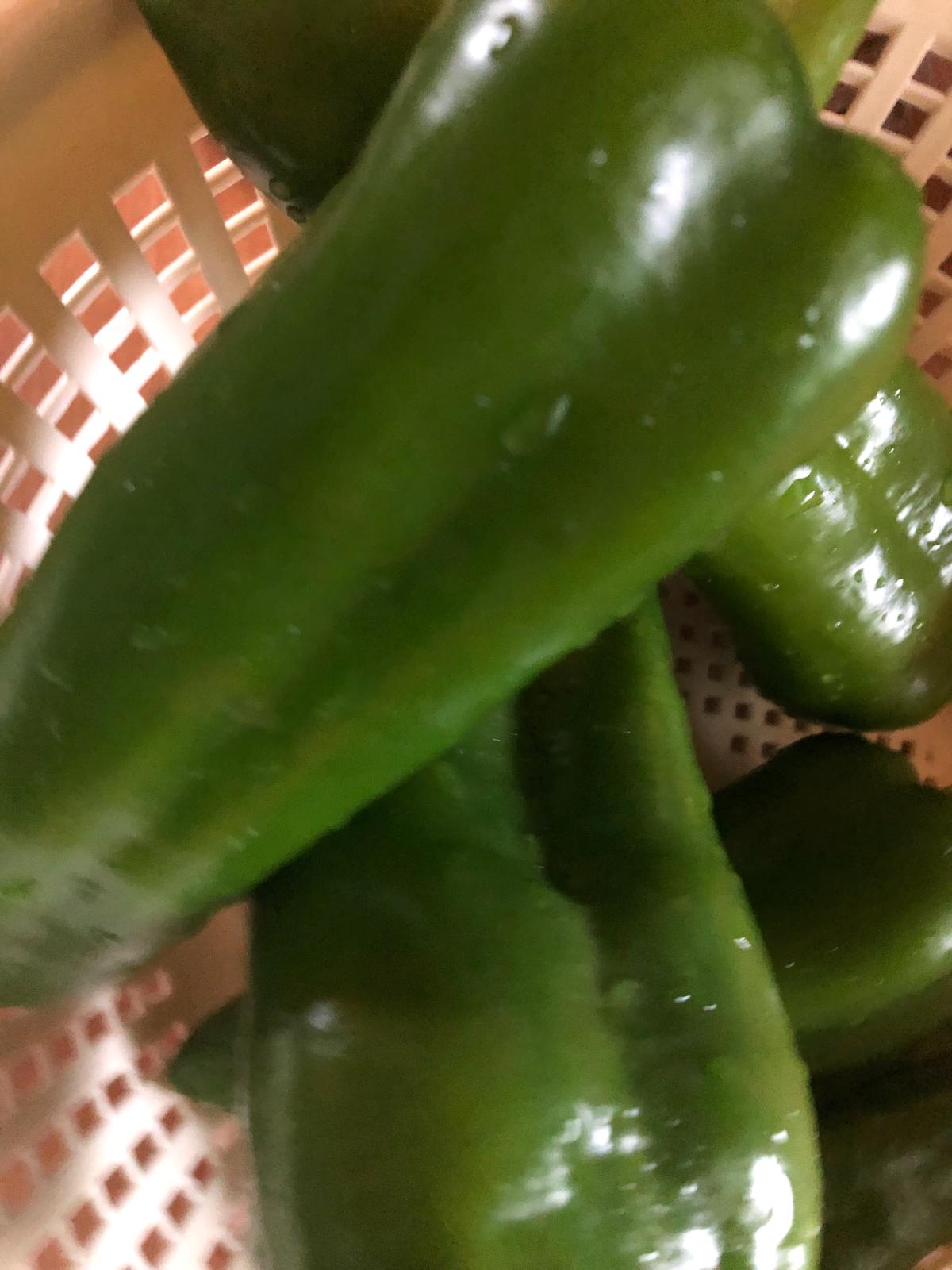
Freezing is fast and easy. It’s the best option if you only need to preserve a small amount of peppers; for example, if you just have a leftover pepper or two, or a part of one.
Why freeze peppers
- Freezing is fast and easy
- Good way to preserve a small amount without additional utility use
- Maintain the color of peppers and come out looking more like “normal” cooked peppers
- Equal measure when cooking as you would use fresh (no shrinkage)
How to freeze peppers to preserve them:
- Wash, stem, and core the peppers.
- Cut the peppers into your preferred portion for use. Diced is usually the most useful, but sliced is fine, too.
- It is not easy to cut peppers after they are thawed, so it is best to choose your size before you freeze.
- Pack the peppers into a freezer zipper bag, or if you prefer, vacuum seal them.
- Label and freeze.
How to use frozen peppers
Frozen peppers, much like rehydrated dried peppers, will come out of the freezer with the consistency of cooked peppers. They will be soft and pliable, not stiff like fresh peppers.
Frozen peppers can simply be added to any cooked dish where you would use fresh peppers for cooking.
Some options for using frozen and thawed peppers are:
- Meatballs and meatloaf
- Quiche and egg scramble
- Sauteeing for dishes
- Salsa
If you decide you’d rather have your peppers dehydrated after you’ve frozen them, you can do that, too -- just remove them from the freezer and dry as outlined above!
Peppers Are Worth Preserving!

We shouldn’t overlook fresh peppers when we are stocking up and preserving foods. Out of season, peppers can be pricey, but more often than not, you’re cooking with them, anyway. Both dehydrated and frozen peppers work exceptionally well in cooked dishes out of season.
Preserving peppers is one more way to cut food waste, maximize your harvest or local produce purchases, eat with the seasons, and save money!
Dehydrating and freezing aren’t the only ways to preserve peppers (but they’re the most like fresh for cooking). You can also pickle peppers in simple refrigerator pickles or canned in a brine. Peppers are also great in lacto fermentation recipes, and they make lovely fermented hot sauce, too!

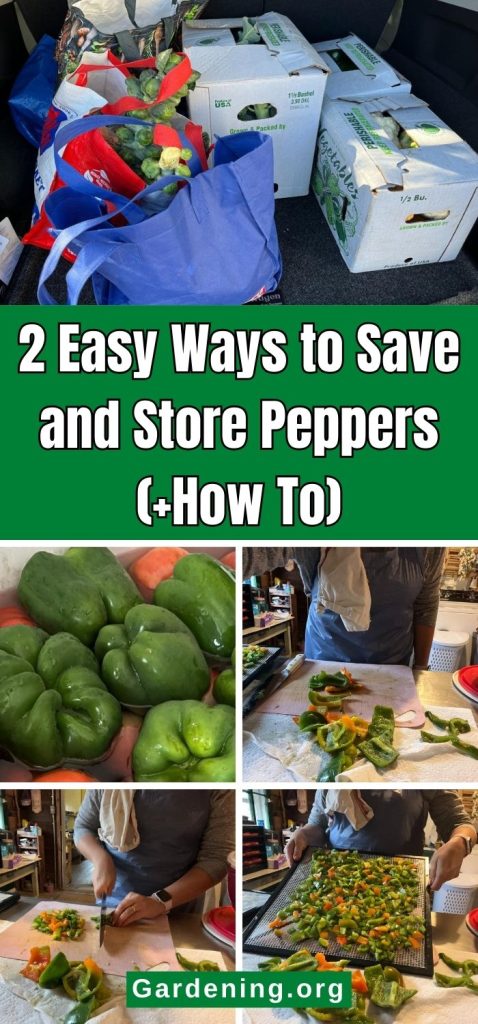
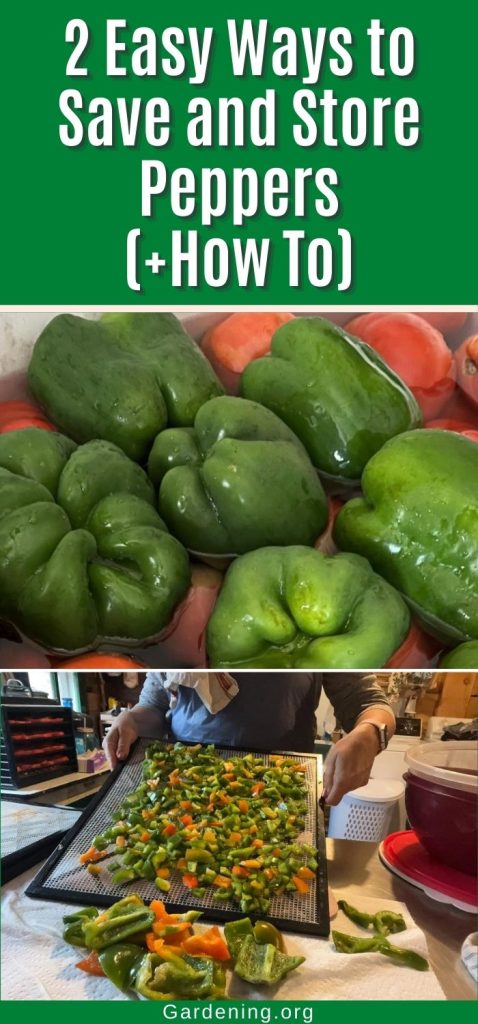
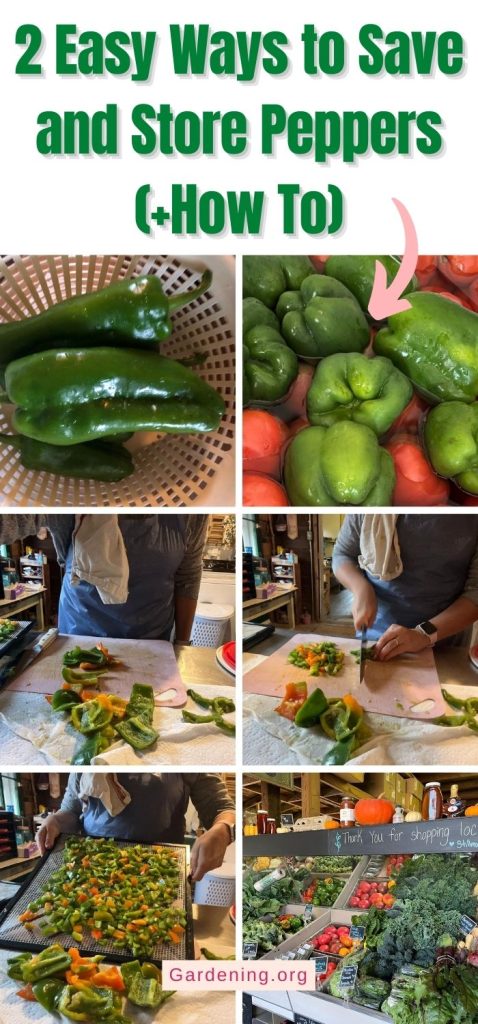
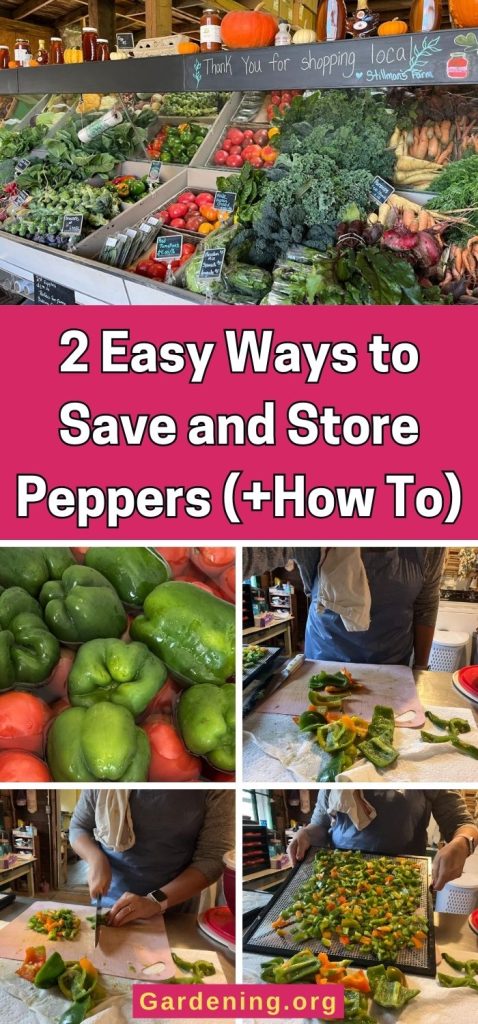
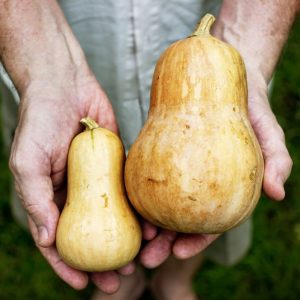
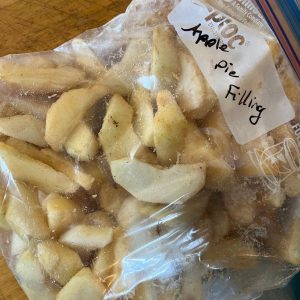
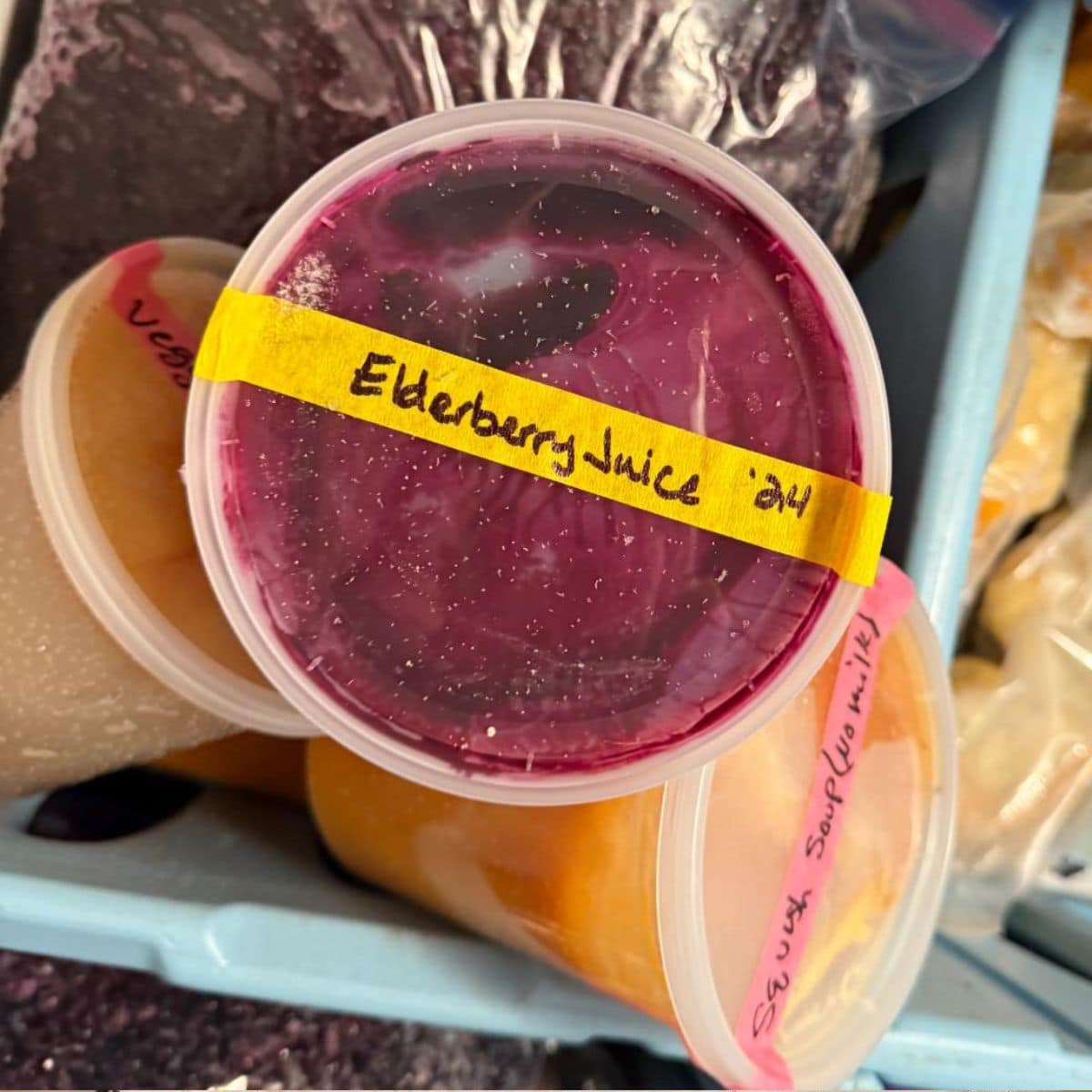
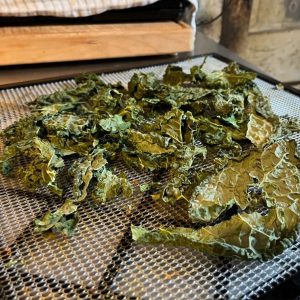
Leave a Reply